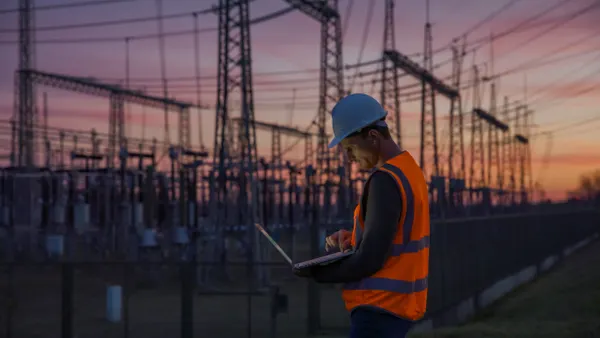Dive Brief:
- Average air pollution exposure levels increased across the United States in 2020, even with a decrease in "human-made emissions resulting from restricted economic activity and people’s movement," according to new research.
- Of the world's 100 most polluted cities outlined in a report released last week by IQAir, 77 were found in the U.S. at one point last year. One of the main culprits for that pollution was the West Coast's record-breaking wildfire season, which contributed to California, Oregon and Washington experiencing the worst monthly air quality.
- Overall, 38% of U.S. cities did not meet the World Health Organization's (WHO) guidelines for annual exposure limits to fine particulate matter (PM2.5), which can penetrate the lung barrier and enter the bloodstream — a spike from 21% of cities in 2019.
Dive Insight:
The last year brought disturbing images of orange California skies, or the Sahara dust plume that reached as far as Texas. Those types of natural phenomena were some of the most significant contributors to air pollution, disrupting the fact that for much of the year the U.S. was actually on track to have improved measured air quality over 2019, said Glory Dolphin Hammes, IQAir North America's CEO.
Soon after the onset of COVID-19, it became apparent that pandemic-driven lockdowns and stay-at-home orders were slashing carbon emissions, a positive for air quality and a slowdown to global warming. Ultimately though, average particle pollution levels across the country were up 6.7% for the year.
"All of that hard work that we did to reduce our fossil fuels, to change our behavior, really did not help us with this natural occurrence," said Dolphin Hammes.
And while 84% of 106 monitored countries did see air quality improvements, still only 24 total met WHO guidelines for PM2.5.
Some U.S. cities did experience a net improvement amid the coronavirus-era changes. Chicago's air pollution fell 13% last year. Chicago is also an example of a city that identified an air pollution problem prior to the pandemic and took steps toward a cleaner future; last summer, Chicago announced a new air quality agenda aimed in part at reducing polluting sites' proximity to homes and some businesses, with particular focus on longstanding environmental overburdening of disadvantaged communities.
But further west, Los Angeles — which experienced a rare stretch during the lockdown period when its air quality met WHO guidelines — had by year's end seen a PM2.5 increase of 15%.
IQAir also released a report last month with Greenpeace Southeast Asia on the cost of air pollution. Taking into account lowered economic productivity from work absences and overall reduced life expectancy, Los Angeles was calculated to have lost $32 billion or $2,700 per person, the most significant per capita air pollution cost worldwide. New York City's loss was measured to be $25 billion.
The health implications of air pollution also received heightened attention during the pandemic. Researchers at the Harvard T.H. Chan School of Public Health reported last year that parts of the U.S. with high PM2.5 levels prior to the pandemic were more likely to see people die when infected with the coronavirus.
All of the changes in the world the past year and noticeable impacts of air pollution present a critical opportunity for change, Dolphin Hammes said, particularly lockdown-supported pollution reductions fade.
"As things are opening up, as we're kind of getting back to a new normal, we actually need to question our new normal," she said. "We need to see what is it that we can do to reduce our dependence on fossil fuels."















